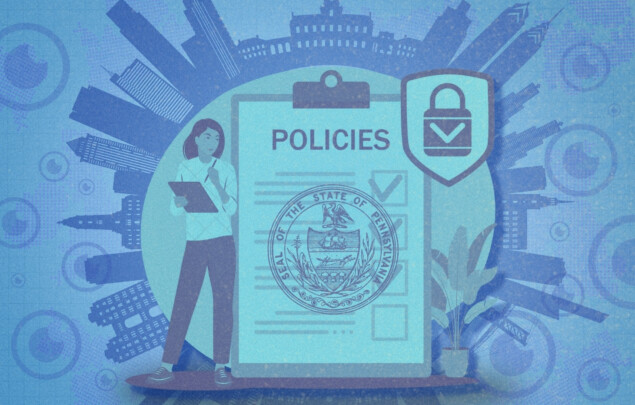An Acceptable Use Policy (AUP) is a critical document for organizations, outlining acceptable and unacceptable behaviors concerning the use of company resources. In this guide, we’ll explore the essential components of an AUP and provide you with a free template to kickstart the creation of your policy.
Why You Need an Acceptable Use Policy
Setting Expectations
An AUP establishes clear expectations for employees or users regarding the appropriate use of company assets, including computers, networks, and information systems.
Mitigating Risks
By defining acceptable and unacceptable behaviors, an AUP helps mitigate risks associated with misuse of resources, ensuring a secure and productive work environment.
Key Components of an Acceptable Use Policy
- Introduction: Setting the Tone
-
- Clearly state the purpose of the policy, emphasizing the importance of responsible use of company resources.
- Scope: Defining Applicability
-
- Specify the scope of the AUP, detailing which resources and activities are covered, such as company computers, networks, email systems, and internet usage.
- Authorized Access: User Responsibilities
-
- Outline the responsibilities of users with authorized access. This includes the protection of login credentials, reporting security incidents, and understanding their role in maintaining a secure environment.
- Unacceptable Use: Prohibited Activities
-
-
- Clearly list activities that are strictly prohibited, such as unauthorized access, distribution of malicious software, or engaging in any form of harassment.
- Consequences: Enforcement Measures
-
-
- Define the consequences of violating the AUP. This may include disciplinary actions, account suspension, or legal measures, depending on the severity of the breach.
- Monitoring: Company’s Right to Monitor
-
-
- Communicate the organization’s right to monitor activities on company resources, ensuring users are aware that their actions may be subject to scrutiny.
- Reporting Violations: Encouraging Accountability
-
-
- Provide a mechanism for users to report AUP violations, fostering a culture of accountability and prompt resolution of issues.
- Review and Updates: Keeping Current
-
-
- State the regular review schedule for the AUP and emphasize the organization’s right to update the policy to address emerging risks or changes in technology.
How to Use the Acceptable Use Policy Template
1. Access the Template:
-
- Download the free Acceptable Use Policy template from [Your Company’s Website] or other reputable sources.
2. Customize for Your Organization:
-
- Tailor the template to suit your organization’s specific needs, including company name, applicable resources, and consequences for violations.
3. Legal Review:
-
- Consult legal professionals to review the customized policy to ensure it aligns with local laws and regulations.
4. Communication and Training:
-
- Once finalized, communicate the AUP to all employees or users, providing training if necessary, to ensure understanding and compliance.
Sample Acceptable Use Policy Template
*Quick note: Our sample Acceptable Use Policy Template covers key requirements and legal considerations. However, it is important to customize this template to match your specific practices and legal requirements. It’s advisable to consult with legal counsel to ensure full compliance with privacy laws.
If you would like a comprehensive Acceptable Use Policy Template tailored to your mobile app’s needs, we can help. Create an account and get started in 5 minutes.
[Your Company Name] Acceptable Use Policy
- Introduction: This Acceptable Use Policy outlines the guidelines and expectations for using [Your Company’s] resources.
- Scope: This policy applies to all employees, contractors, and users with authorized access to [Your Company’s] computers, networks, and information systems.
- Authorized Access: Users are responsible for safeguarding login credentials, promptly reporting security incidents, and understanding their role in maintaining a secure environment.
- Unacceptable Use: Prohibited activities include unauthorized access, distribution of malicious software, harassment, and any actions compromising the integrity of [Your Company’s] resources.
- Consequences: Violations may result in disciplinary actions, account suspension, or legal measures, depending on the severity of the breach.
- Monitoring: [Your Company] reserves the right to monitor activities on company resources to ensure compliance with this policy.
- Reporting Violations: Users are encouraged to report AUP violations promptly to [Designated Contact Person or Team].
- Review and Updates: This policy will be reviewed [Specify Frequency], and updates may occur to address emerging risks or changes in technology.
Adhering to this Acceptable Use Policy contributes to a secure and productive work environment at [Your Company].
[Your Company Logo]
[Date of Last Update]
____________________________________________________________________________________
Reminders:
- Replace “[Your App Name],” “[Date],” “[Your Contact Information]”, and etc. with your specific details.
- Ensure that your Privacy Policy accurately reflects your data collection and usage practices and complies with mobile app and privacy laws.
- Regularly review and update your Privacy Policy to stay compliant with evolving mobile app and privacy regulations.
- It’s advisable to seek legal counsel to customize this template to your specific circumstances and ensure full compliance.
Wrapping Up
In summary, a well-made Acceptable Use Policy not only protects your interests but also builds trust with your users. Customize the template to fit your website specifics and seek legal advice for alignment with local laws. This ensures transparency, legal protection, and a positive user experience, reflecting your commitment to responsible online practices.

